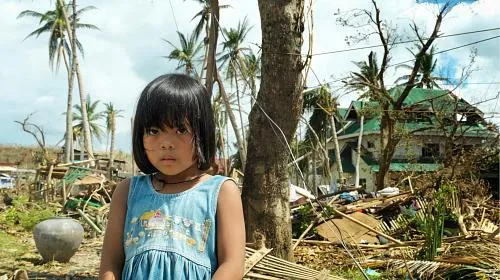CARE Emergency Team Leader in Philippines Praises U.S. Public Donor Response, says Relief Efforts Face Enormous Logistical Challenges
ATLANTA (Nov. 15, 2013) — Amid extremely difficult circumstances, CARE’s emergency response teams are working around the clock and ramping up relief efforts to remote areas of the Philippines devastated by Typhoon Haiyan.
CARE Deputy Emergency Director David Gazashvili, who is in the town of Ormoc leading CARE’s response, says the situation in the Philippines is in some ways more challenging than Haiti after 2010’s catastrophic earthquake. “The remoteness, flooding and debris everywhere in the affected areas means that simple journeys can take days,” Gazashvili said. “The widespread magnitude of the damage means limited to no access by land or air and no lines of communication or electricity up and running.“
CARE is appealing to the public for $12 million to assist 200,000 people in some of the hardest-hit communities, starting with the provision of food, shelter and other emergency assistance. On Thursday, CARE distributed sacks of rice to 1,000 people in Ormoc and distributions are expected to continue in coming days. Gazashvili said lack of fuel for vehicles and even dry places for relief agencies to work is slowing aid to survivors who are exhausted and have lost everything.
“I can’t put into words the continuous exhaustion because there is nowhere for anyone to sleep and there is debris everywhere,” Gazashvili said. “Worst of all is the desperate look in the eyes of survivors. They’re hungry and they’ve been hungry for days. The food is just gone, picked clean.”
The outpouring of support from the American public has been tremendous. “But it needs to continue so we can deliver life-saving emergency food and shelter to the people who are waiting desperately for it,” Gazashvili said.
Worst of all is the desperate look in the eyes of survivors. They’re hungry and they’ve been hungry for days. The food is just gone, picked clean.
– CARE Deputy Emergency Director David Gazashvili
An estimated 11.8 million people have been affected by Typhoon Haiyan, which is believed to be the strongest storm ever to make landfall. More than 2,357 people already confirmed dead. Nearly a quarter million homes were destroyed or damaged by the storm, displacing more than 920,000 people.
Gazashvili says the strong response from Americans so far to Typhoon Haiyan demonstrates that Americans are eager to help in times of crisis. “CARE is seeing an incredible response from all over the United States. People are contacting CARE to ask how they can help. They are going online and donating. They are organizing fundraisers in schools, workplaces, stores and restaurants. This outpouring reflects both the generosity of Americans, and the strong ties so many people in the United States have to the Philippines.”
A donation of $120 can provide 10 food packages for families, $240 can provide materials for eight emergency shelters and $420 can provide food and shelter packages to 10 families. People wishing to support families affected by Typhoon Haiyan can donate at www.care.org.
About CARE
CARE has worked in the Philippines since 1949, providing emergency relief when disaster strikes and helping communities prepare for disasters. CARE’s past responses in the Philippines have included Typhoon Bopha in 2012 and Typhoon Ketsana in 2009.
Founded in 1945 with the creation of the CARE Package®, CARE is a leading humanitarian organization fighting global poverty. CARE has more than six decades of experience delivering emergency aid during times of crisis. Our emergency responses focus on the needs of the most vulnerable populations, particularly girls and women. Last year CARE worked in 84 countries and reached more than 83 million people around the world.
Media Contacts
Atlanta: Nicole Harris, CARE USA +1.404. 735.0871 nharris@care.org
Atlanta: Brian Feagans, CARE USA +1.404.457.4644 bfeagans@care.org

